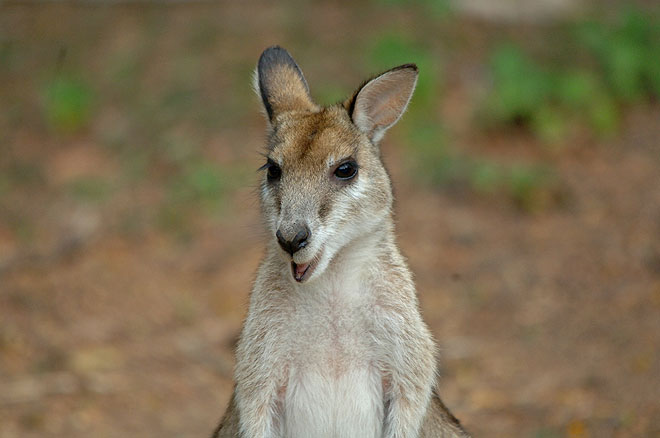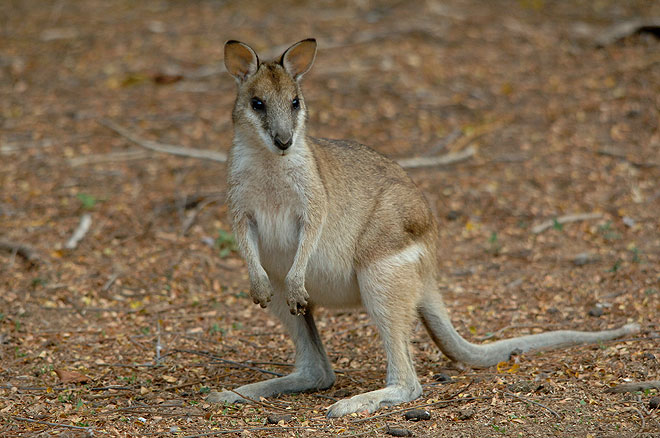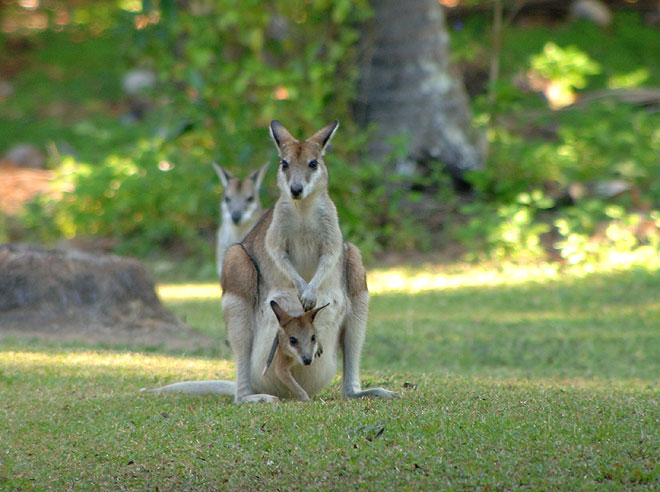
Classified as the largest known group of vertebrates to hop on the planet, the kangaroo family has been bouncing its way around arid and tropical parts of Australia for millions of years. One member of this family that’s commonly seen around Far North Queensland is the Agile Wallaby, which swims almost as well it hops.
A mid-sized hopper, with males reaching around 27kg and females around 15kg, the agile wallaby makes its way around dense bushland either alone or in small groups. Interestingly, this dexterous hopper also inhabits open grassland, and when doing so prefers to subsist within larger groups dominated by one male.

Being adept at swimming in northern Australia has meant the Agile Wallaby has had a few problems with the crocodile, one of it’s major predators. Humans, however, are not far behind, as the continual expansion of urban development threatens their population. Wild dogs are also known to impact the population of this agile marsupial.
In all, there are four sub species of the Agile Wallaby; agilis, nigcrescens, papuanus and jardinii, with the latter being found around the northern and eastern coast of Queensland. Distinguishing features of the agile wallaby include dark or black outer ears, and white stripes on its face and hip.
Strict herbivores, agile wallabies eat native grasses, shrubs and bushes during the wet season, and moisture laden roots during the dry. Interestingly, theses wallabies have a digestive system similar to cows and often regurgitate their food to assist with digestion.

The Agile Wallaby lives until about 10-14 years of age, with females becoming fertile at around 18 months. Peak breeding season occurs in the winter, with only one joey being produced each season. The gestation period is around 30 days, and the joeys remain in their mother’s pouch for up to seven months, and suckle until around 12 months old. Females are capable of embryonic diapause, meaning she can have a dormant embryo in waiting until the joey leaves her pouch.
A nocturnal animal, the agile wallaby can most often be seen foraging in open grasslands prior to dawn or dusk.
They’re believed to have inhabited Australia for at least four million years.
